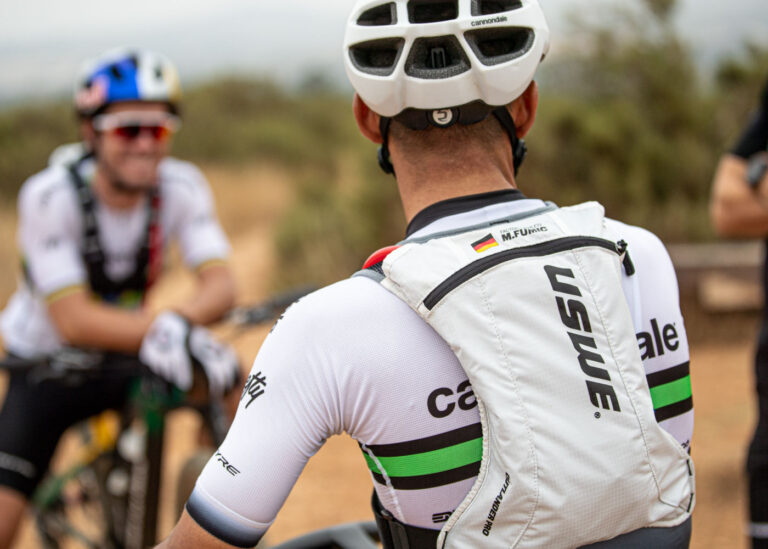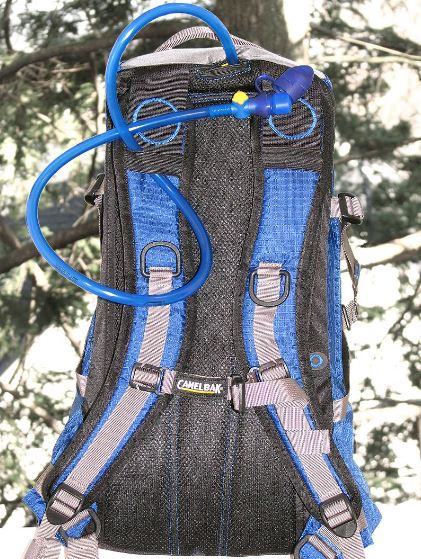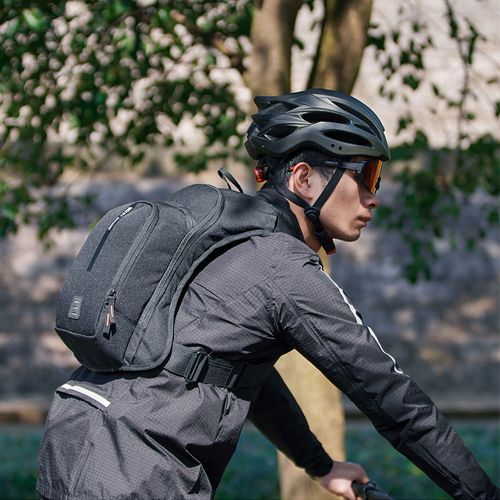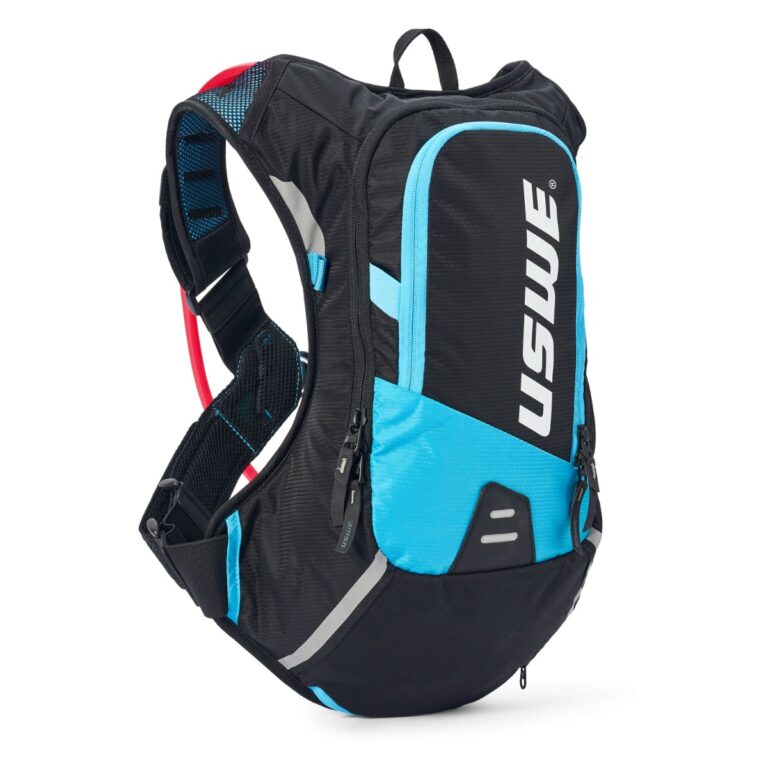Adding Emergency Supplies to Hydration Packs: A Cyclist’s Guide to Preparedness
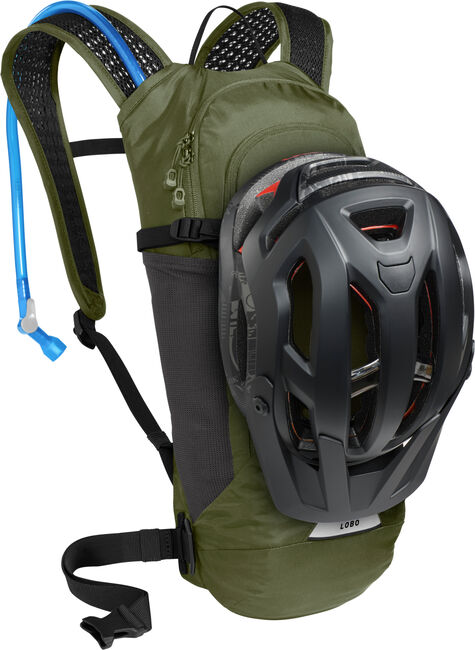
Key Point Summary of Adding Emergency Supplies to Hydration Packs:
- Essential Emergency Supplies: Include a first-aid kit, multi-tool, spare tube or patch kit, portable pump or CO2 inflator, emergency blanket, and water purification tablets.
- Communication Devices: A fully charged phone and possibly a satellite communicator for remote areas.
- Nutrition and Protection: High-energy snacks and sun protection (sunscreen, lip balm with SPF).
- Visibility and Navigation: A headlamp or bike lights and a physical map or compass, in addition to a GPS device.
- Weather Preparedness: Lightweight, packable rain gear and extra layers for unexpected weather changes.
As a seasoned cyclist who has navigated countless trails on mountain bikes, gravel bikes, and cyclocross bikes, I’ve come to appreciate the value of being prepared. While hydration is crucial, equally important is carrying emergency supplies. Whether you’re a beginner or have some experience, understanding what emergency items to include in your hydration pack can make a significant difference in safety and peace of mind.
The Importance of Being Prepared
Embarking on cycling adventures, whether on familiar local trails or remote gravel paths, demands not just physical readiness but also a measure of foresight. Having the right emergency supplies in your hydration pack is not about expecting the worst; it’s about ensuring you can handle unexpected situations confidently and safely.
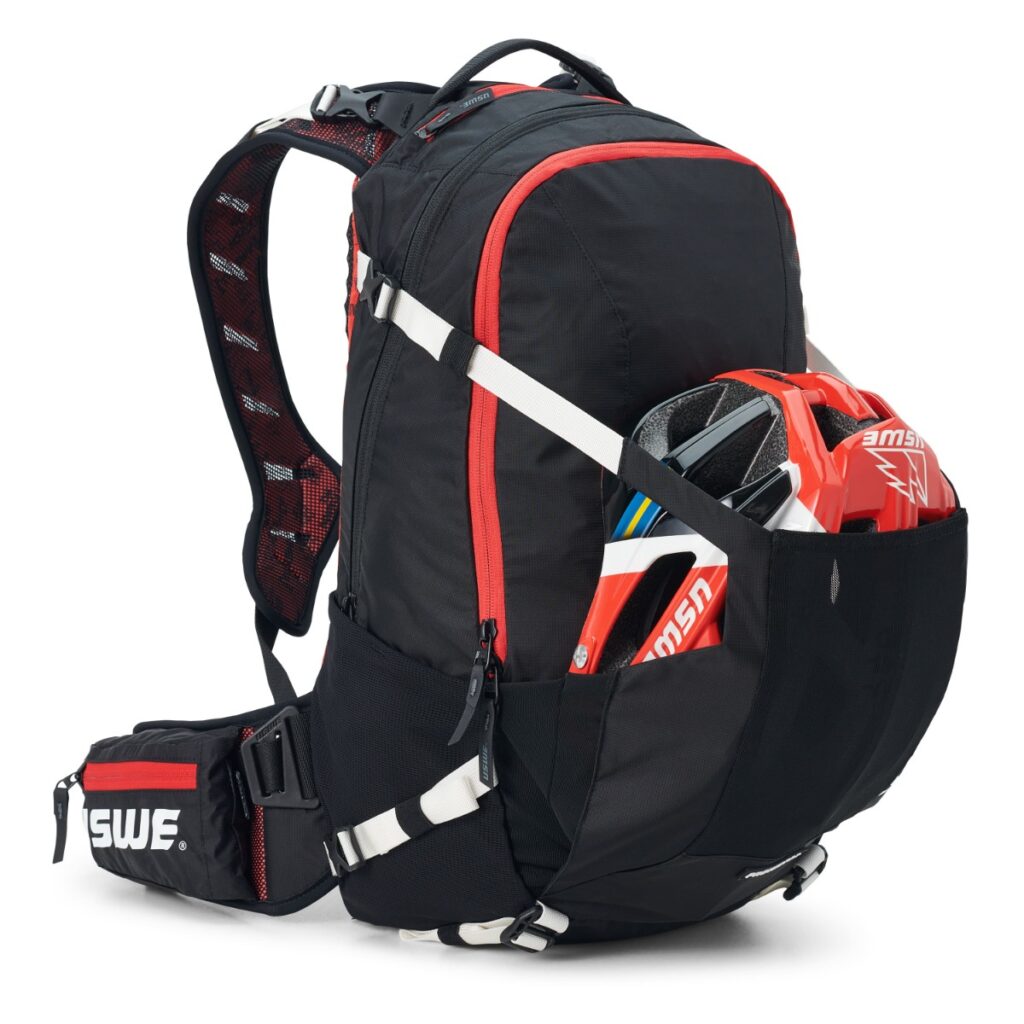
Choosing Emergency Supplies
First-Aid Kit: A compact, cycling-specific first-aid kit can address minor injuries on the spot. It should include basics like antiseptic wipes, bandages, blister pads, and antihistamines.
Repair Kit Essentials: A multi-tool with various wrenches and screwdrivers, a spare tube or patch kit, and a portable pump or CO2 inflator can save the day if you encounter mechanical issues.
Emergency Shelter and Warmth: An emergency blanket is lightweight and can be crucial in retaining body heat in unexpected overnight situations or sudden weather changes.
Water Purification: Carrying water purification tablets is a wise move, especially on longer routes where water sources may be questionable.
Communication and Navigation: In addition to your phone, consider a satellite communicator for areas without cell service. A compact headlamp enhances visibility, while a physical map and compass offer fail-safe navigation if technology fails.
Nutrition and Sun Protection: Energy bars or gels can provide a vital energy boost. Sunscreen and lip balm with SPF protect against sunburn, often underestimated by cyclists.
Weather Adaptability: Packable rain gear and an extra layer can be lifesavers when weather conditions turn.
Packing Tips
The challenge is packing these essentials without overburdening your hydration pack. Prioritize compact, lightweight items and use small pouches or ziplock bags for organization. Regularly review and adjust your emergency kit based on the season, the specific ride, and personal experiences.

Conclusion: Safety as a Priority
Adjusting the list to include a pack specifically designed for the unique needs of cyclists, particularly focusing on stability and hydration management, here’s an updated selection:
- Salomon ADV Skin 12 Set: Its vest-like fit offers minimal bounce, making it suitable for cyclists who prefer a snug, stable pack. The intuitive organization allows for easy access to both hydration and emergency supplies.
- USWE Airborne 3L: Specifically designed with bikers in mind, the Airborne 9 features a bounce-free harness system, ensuring the pack stays in place on rough terrain. It has ample storage for water and emergency supplies, combining hydration needs with safety and convenience.
- Ultimate Direction Mountain Vesta 4.0: Known for its trail-running origins but highly adaptable for cycling, this vest provides an excellent balance of hydration capacity and essential storage, designed for stability and comfort during active use.
Incorporating the USWE Airborne 9, this list offers a comprehensive look at hydration solutions that cater to cyclists’ requirements for both emergency preparedness and comfort on the trails.
Incorporating emergency supplies into your hydration pack is an essential aspect of cycling preparedness. It complements your hydration strategy by ensuring that you’re equipped to address not just thirst but also unexpected mechanical issues, minor injuries, and sudden weather changes. As you gain experience and tackle more diverse cycling challenges, these emergency supplies will enhance your safety, resilience, and enjoyment on every ride. The goal of carrying these items is not to use them but to have them just in case the need arises.
Stay safe and enjoy the ride!
John
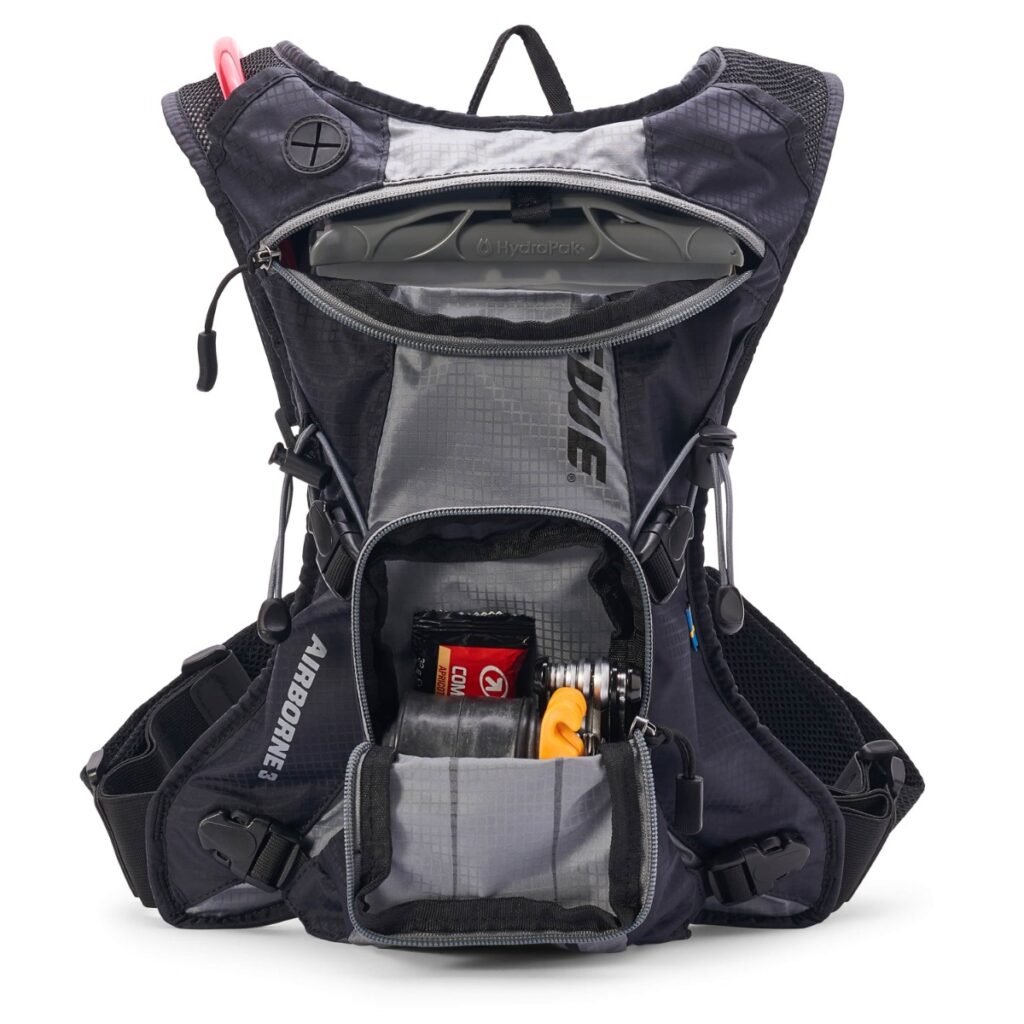
FAQ
How do I keep my hydration pack from bouncing?
To keep your hydration pack from bouncing, adjust the straps for a snug fit against your body, and evenly distribute the weight inside the pack.
How long can you keep water in a hydration pack?
It’s best to empty and dry your hydration pack after each use. If you must store water, do so for a day or two max to prevent bacterial growth.
Do I really need a hydration pack?
Whether you need a hydration pack depends on the length of your rides and personal preference. For longer rides, a hydration pack is very useful for carrying more water and essentials comfortably.

